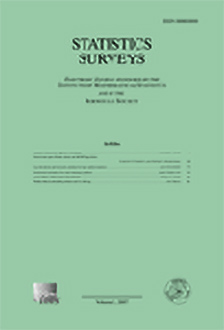Abstract
Researchers are sometimes interested in predicting a distal or external outcome (such as smoking cessation at follow-up) from the trajectory of an intensively recorded longitudinal variable (such as urge to smoke). This can be done in a semiparametric way via scalar-on-function regression. However, the resulting fitted coefficient regression function requires special care for correct interpretation, as it represents the joint relationship of time points to the outcome, rather than a marginal or cross-sectional relationship. We provide practical guidelines, based on experience with scientific applications, for helping practitioners interpret their results and illustrate these ideas using data from a smoking cessation study.
Citation
John J. Dziak. Donna L. Coffman. Matthew Reimherr. Justin Petrovich. Runze Li. Saul Shiffman. Mariya P. Shiyko. "Scalar-on-function regression for predicting distal outcomes from intensively gathered longitudinal data: Interpretability for applied scientists." Statist. Surv. 13 150 - 180, 2019. https://doi.org/10.1214/19-SS126
Information





